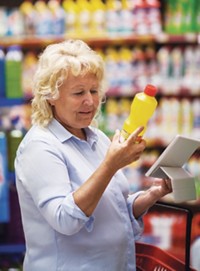Advertisement
Grab your lab coat. Let's get started
Welcome!
Welcome!
Create an account below to get 6 C&EN articles per month, receive newsletters and more - all free.
It seems this is your first time logging in online. Please enter the following information to continue.
As an ACS member you automatically get access to this site. All we need is few more details to create your reading experience.
Not you? Sign in with a different account.
Not you? Sign in with a different account.
ERROR 1
ERROR 1
ERROR 2
ERROR 2
ERROR 2
ERROR 2
ERROR 2
Password and Confirm password must match.
If you have an ACS member number, please enter it here so we can link this account to your membership. (optional)
ERROR 2
ACS values your privacy. By submitting your information, you are gaining access to C&EN and subscribing to our weekly newsletter. We use the information you provide to make your reading experience better, and we will never sell your data to third party members.
Environment
What the 2016 election means for the legal marijuana industry
Voters uphold plastic bag ban in California
by Britt Erickson & Cheryl Hogue
November 10, 2016
| A version of this story appeared in
Volume 94, Issue 45
2016 U.S. Election: Cannabis legalization

Note: Montana legalized medical uses in 2004, but imposed restrictions in 2009.
The outcome of state ballot initiatives in last week’s elections will have lasting effects on the cannabis testing and plastics industries.
Ballot initiatives in several states will foster the legal marijuana industry—and the analytical services industry that’s grown up around it.
The legal marijuana industry is poised to continue its rapid growth in the U.S. Voters in California, Maine, Massachusetts, and Nevada legalized recreational cannabis for adults this year, joining Alaska, Colorado, Oregon, Washington, and the District of Columbia. More than half of all U.S. states have legalized cannabis for medical purposes and four additional states—Arkansas, Florida, Montana, and North Dakota—voted in favor of medical marijuana this year. Experts predict that the cannabis industry will continue growing rapidly and become a $32 billion industry by 2020.
Cannabis comes in many different forms—flowers or buds that are smoked, baked goods like brownies and cookies, oils, waxes, and other products. This large variety of different kinds of cannabis products makes quality control a challenge, particularly when it comes to pesticides.
States are on their own to set safe levels of pesticides on marijuana. They are getting no help from the EPA, which generally evaluates pesticides for safety, because the federal government categorizes marijuana as a controlled substance with no accepted medical uses and a high potential for abuse.
Voters “have now strongly signaled their desire for legal, regulated, and fully tested cannabis products for both medical and adult use,” says Jeffrey C. Raber, chief executive officer and founder of the Werc Shop, a cannabis testing lab in Washington and California. “Laboratories possessing experience and expertise in the testing of diverse cannabis products are already informing regulatory and legislative officials in California about the technical aspects required to now bring proper regulations to this new cannabis market,” he says.

In another election outcome, the plastics industry lost its campaign against the nation’s only statewide ban of single-use plastic bags. In a ballot initiative, voters affirmed California’s prohibition, which state lawmakers passed in 2014 with support from environmental activists and the grocery industry.
The American Plastic Bag Alliance—which was founded by The Society of the Plastics Industry, a plastics trade association—unsuccessfully fought the ban. Hilex Poly, Formosa Plastics, Superbag, and Advance Polybag collectively spent $6 million to defeat the measure, according to MapLight, a nonpartisan research organization.
The vote means the loss of a significant market for plastic bag makers. California is the world’s sixth largest economy with a gross domestic product of $2.4 trillion in 2015 and home to nearly 39 million people.
The ban became effective on Nov. 9, according to the California Department of Resources Recycling & Recovery.





Join the conversation
Contact the reporter
Submit a Letter to the Editor for publication
Engage with us on Twitter